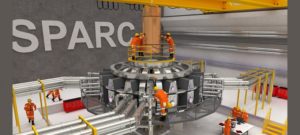
MIT partners with Commonwealth Fusion Systems to Make Fusion Power a Reality
The Massachusetts Institute of Technology (MIT) has announced an ambitious new plan to partner with a private spin-off company, Commonwealth Fusion Systems (CFS), in order to accelerate development of fusion energy with the goal of building a reactor capable of putting power onto the grid within 15 years.
For decades, MIT’s Plasma Science and Fusion Center had been one of the key facilities in America’s federally-funded fusion energy science program. Its Alcator C-Mod was one of only three experimental tokamak fusion reactors in the United States, until the Department of Energy shut it down at the end of September 2016. On the very day of its shut down, the reactor set a new world record for plasma pressure – a key ingredient for producing energy from fusion. The experiment had been threatened since 2012, as funding for fusion was increasingly cut by the Department of Energy.
Even in the face of these persistent threats of budget cuts, the team at MIT’s Plasma Science and Fusion Center, led by Director Dennis Whyte and Deputy Director Martin Greenwald, had persisted in innovating about how to move forward with fusion as an energy source. Key to their design of a new power plant, first announced in 2015, is utilizing the innovations in materials science, particularly in high temperature superconducting magnets, in order to shrink the size of the power plant – and therefore its cost. The newly available superconducting steel tape – which is then coated with a compound called yttrium-barium-copper oxide (YBCO) – will be used to create the powerful magnets that will contain the dense, super-heated plasma in which fusion will take place. In the first years of research, CFS will focus its efforts on understanding and designing these magnets.

Visualization of the proposed SPARC tokamak experiment. (MIT)
Once the team feels they have developed a strong enough understanding of these new high-powered magnets, they will move forward with designing and build a fusion power plant, called SPARC (Soonest Possible Affordable Robust Compact).
CFS will join the MIT Energy Initiative in a new University-Private collaborative effort to accelerate development of fusion. This program is funded with an investment of $50 million by the Italian energy firm Eni. CFS is exploring other private investments as well.
Although the Department of Energy is not funding this new venture, it would not have been possible without the decades of scientific knowledge built up over decades of research into plasma physics at MIT and around the country. While it is important to find ways to commercialize fusion technology as fast as possible, privately-funded work like this should continue in concert with a robust federally-funded fusion energy sciences program. Our country needs to take an approach to fusion energy research that reflects the importance of a breakthrough in fusion. We need a collaborative, innovative, and multi-faceted approach to fusion energy research that reflects both the opportunity and the risk of fusion energy research.
By spinning off a new company, and going to private investors for capital, MIT and CFS have made a bold gamble that its plan for building a small, modular, more efficient fusion power plant will pay off. The American Security Project, the American Fusion Project, and the Fusion Industry Association all welcome this new approach.





